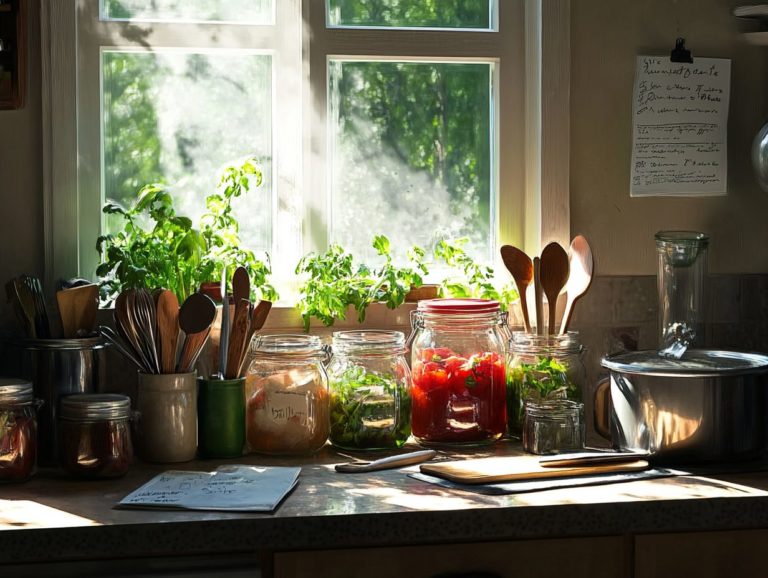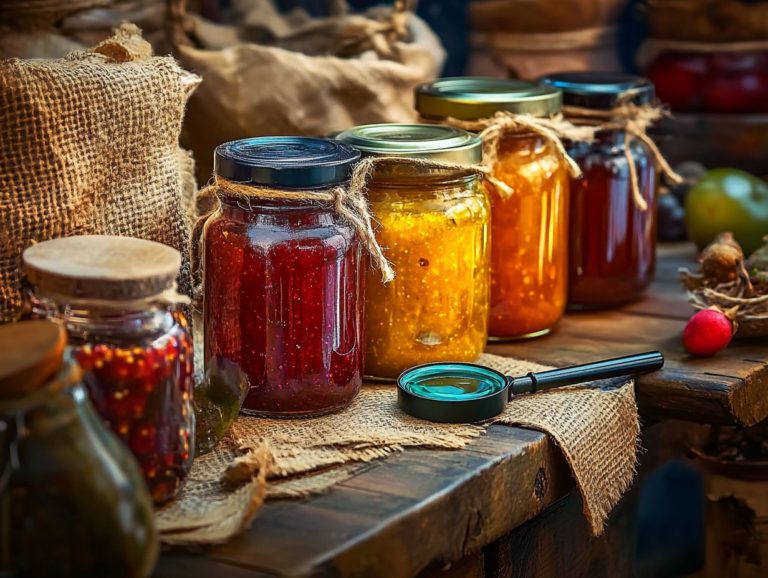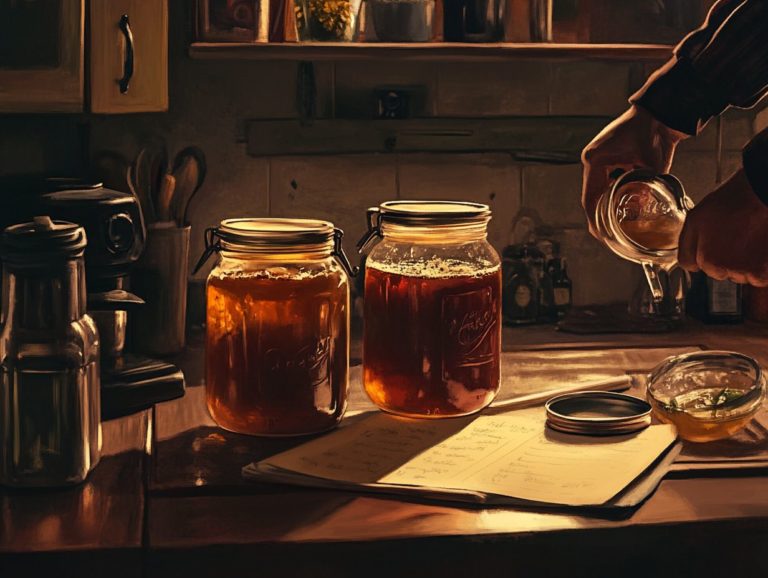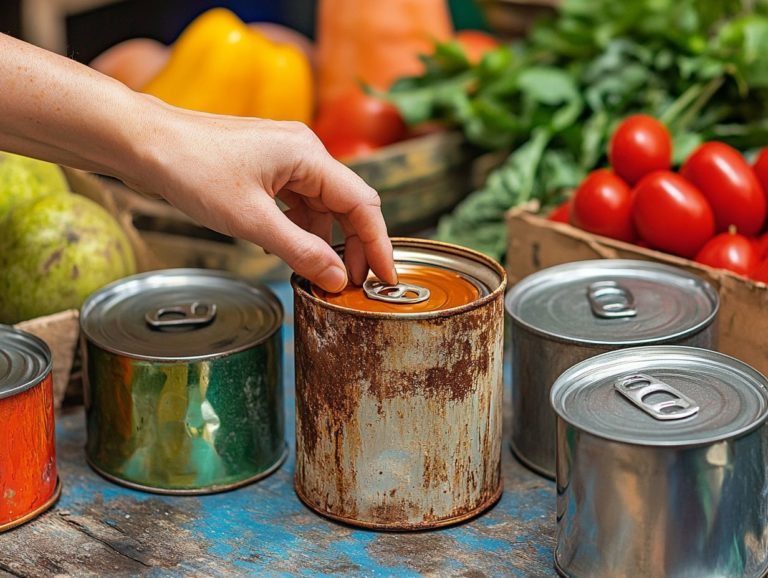What Causes Cloudy Canning Liquid?
Canning your own fruits and vegetables can be a truly rewarding experience, though it often presents unexpected challenges like dealing with cloudy canning liquid. This haze can understandably raise concerns about the quality and safety of your preserved goods.
You re about to delve into what cloudy canning liquid actually is, uncover the possible causes behind it, including mineral deposits from hard water, and discover effective methods to prevent it from occurring. You will also receive guidance on assessing safety and addressing any contamination issues that may arise.
Whether you re a seasoned canner or just beginning your journey, understanding this will keep your jars clear and your food safe!
Contents
- Key Takeaways:
- Understanding Cloudy Canning Liquid
- Possible Causes of Cloudy Canning Liquid
- Preventing Cloudy Canning Liquid
- Dealing with Cloudy Canning Liquid
- Frequently Asked Questions
- Why Is My Canning Liquid Cloudy?
- Can Using Old or Spoiled Ingredients Result in Cloudy Canning Liquid?
- What Is the Role of Sterilization in Preventing Cloudy Canning Liquid?
- Can Cloudy Canning Liquid Still Be Safe to Consume?
- Why Is It Important to Follow Proper Processing Time When Canning?
- How Can I Prevent or Fix Cloudy Canning Liquid?
Key Takeaways:
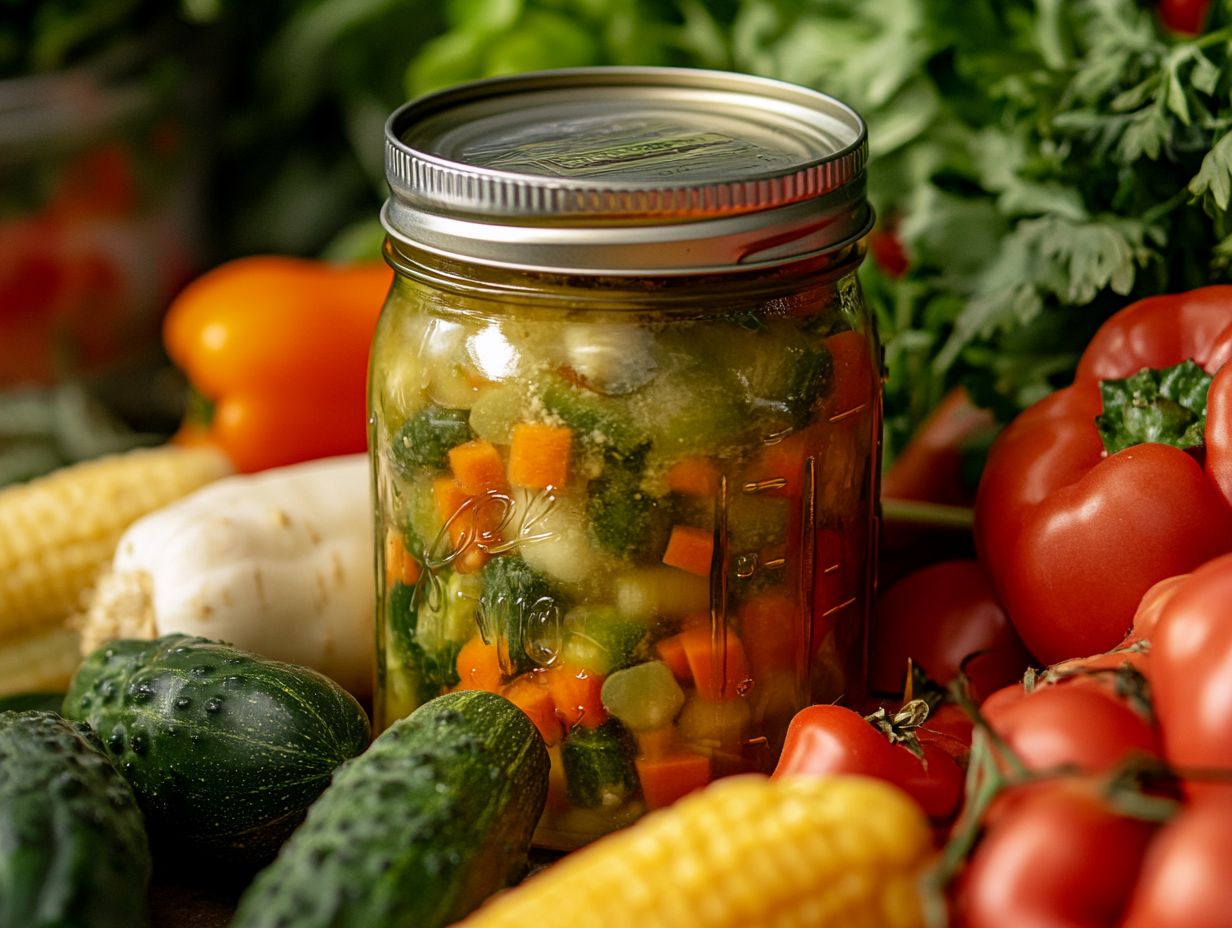
- Keep your canning liquid clear by following these tips: Proper sterilization techniques and using fresh ingredients can prevent cloudy canning liquid.
- Bacterial contamination and improper canning techniques can cause cloudy canning liquid.
- Assess the safety and quality of cloudy canning liquid and dispose of any contaminated items to avoid potential health risks.
Understanding Cloudy Canning Liquid
Understanding cloudy canning liquid is crucial for anyone involved in canning a beloved method of food preservation that enables you to store fruits, vegetables, and other foods safely for the long haul.
When you see cloudy liquid, it can signal various issues that might compromise the safety and quality of your canned goods. This could be due to mineral deposits from hard water, spoilage, or even improper canning techniques, which may lead to quality issues.
Recognizing these indicators can help ensure that your canning process adheres to USDA standards, resulting in delicious and safe foods that grace your pantry.
What is Cloudy Canning Liquid?
Cloudy canning liquid is that unsettling murkiness you might notice in jars of pressure-canned foods, often stemming from various factors tied to the canning process.
This phenomenon can arise from several sources, including the breakdown of starches during cooking or the presence of sediment from the fruits or vegetables, which can contribute to cloudiness. Sometimes, it can even be a result of inadequate boiling water bath techniques. Using vinegar, particularly cleaning vinegar or acetic acid, in your canning process can help maintain clarity, as its acidity inhibits the enzyme activity that contributes to cloudiness.
Adopting proper preservation strategies is essential; they ensure your food retains its quality and flavor over time. By understanding these causes, including the impact of canning salt and proper processing, you not only protect the integrity of your jarred goods but also enhance the overall effectiveness of your home canning endeavors.
Possible Causes of Cloudy Canning Liquid
Identifying the potential causes of cloudy canning liquid is essential for preserving the quality and safety of your canned foods like fruits and vegetables. If you encounter this issue, it’s important to know what to do if your canned food is cloudy. Factors such as bacterial contamination and improper canning techniques can pose serious risks, including foodborne illnesses linked to Clostridium botulinum, a harmful bacterium that flourishes in low-acid environments.
Being vigilant about these issues ensures that your preserved treasures remain safe for consumption.
Bacterial Contamination
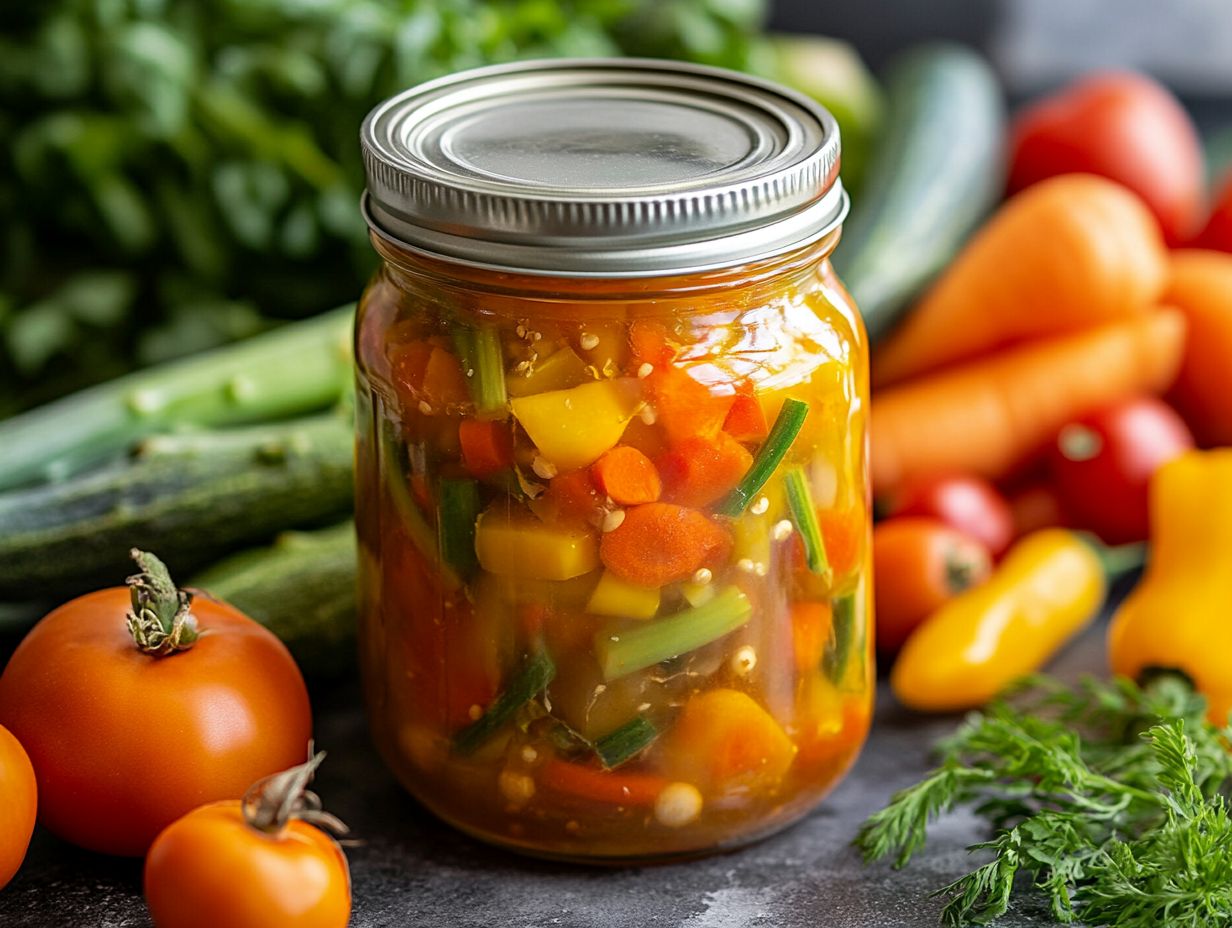
Bacterial contamination poses a significant threat in the canning process, as it can lead to spoilage and serious foodborne illnesses from pathogens like Clostridium botulinum, particularly in low-acid foods.
Beyond this dangerous bacterium, you should also be aware that other types of contamination, such as Salmonella and E. coli, can emerge if proper canning techniques aren t meticulously followed. These bacteria can flourish in improperly processed jars, increasing the risk of severe health complications.
It s essential for you to adopt safe practices, such as thoroughly sterilizing jars and ensuring adequate heat processing, especially when using a pressure canner a special pot that cooks food at high pressure to kill bacteria to mitigate these risks. By recognizing signs of spoilage, like off-odors, bulging lids, or unusual textures, you can identify potentially hazardous batches before they reach your table.
Awareness and diligence are your best allies in ensuring the safety of home-canned foods.
Improper Canning Techniques
Improper canning techniques can significantly impact the quality and safety of your canned goods. Issues like cloudiness in the liquid and compromised seals can arise.
If you skip adequate sterilization of jars and lids, you risk introducing bacteria and fungus that can cloud the liquid and endanger the contents. Using a boiling water bath instead of a pressure canner for low-acid foods can lead to underprocessing, inviting spoilage and altering the appearance of your preserves.
As a home canner, it’s essential to follow step-by-step instructions from reliable sources. This ensures you maintain the correct temperature and processing time. Overlooking these guidelines affects the visual appeal of your creations and can compromise their taste and nutritional value. Proper techniques in the canning process are crucial.
Preventing Cloudy Canning Liquid
You can easily prevent cloudy canning liquid by following proper sterilization methods, using fresh ingredients, and understanding the roles of canning salt, anti-caking agents (substances that prevent clumping in salt), and cleaning vinegar.
Proper Sterilization Methods
Proper sterilization methods are essential for keeping your jars and lids free from bacteria and other contaminants during the canning process. This helps maintain top-notch food quality.
Neglecting these vital practices dramatically increases the risk of spoilage. This can result in less-than-appealing outcomes, like cloudy liquid in your canned goods. Techniques such as boiling water and steam canning effectively eliminate harmful microorganisms, creating a safe environment for food preservation.
Boiling water sanitizes your containers and activates the sealing process, which is crucial for long-term storage. Steam canning uses high temperatures to establish a reliable barrier against contamination. Incorporating these techniques into your canning routine elevates food safety and preserves the freshness and flavor of your homemade preserves.
Using Fresh Ingredients
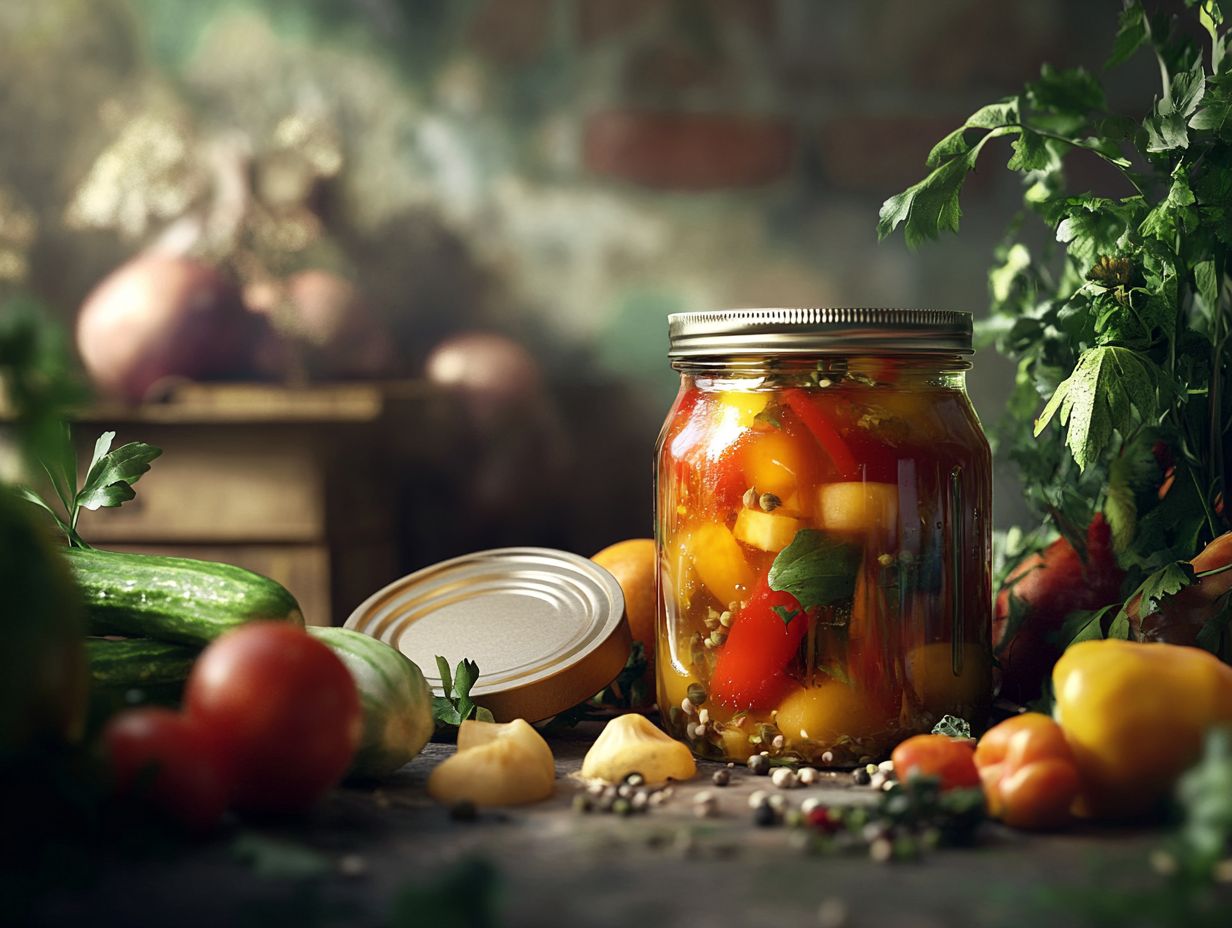
Using fresh ingredients is absolutely essential in food preservation. The quality of your fruits, vegetables, and other components directly impacts the final product and helps prevent spoilage, especially with fresh produce.
Choosing ingredients like beans and carrots at their peak ripeness enhances flavors and maximizes nutritional value. Fresh produce typically contains more vitamins and minerals, making your preserved foods healthier and more vibrant. The freshness of your ingredients influences both texture and taste, ensuring that your preserved items retain that delightful crunch and vivid color.
High-quality components significantly reduce the risk of spoilage, granting you a longer shelf life and greater satisfaction with your creations. Every jar you create is a testament to your careful selection process.
Dealing with Cloudy Canning Liquid
Navigating the complexities of cloudy canning liquid requires a careful evaluation of safety and quality. Knowing when to throw away contaminated items is crucial for your safety! This can significantly mitigate the risk of foodborne illness, especially caused by contaminants like Clostridium botulinum, a dangerous bacteria that can cause serious illness.
Are you ready to can your best jam yet?
Start your canning adventure today for the freshest preserves!
Assessing Safety and Quality
Assessing the safety and quality of canned goods with cloudy liquid is crucial for ensuring they are safe for consumption and free from the risk of foodborne illness or spoilage.
Start by examining the can for any visible signs of damage, such as dents, leaks, or rust. Look for any signs of fungus, which can indicate spoilage. These issues can compromise seals and lead to potential contamination.
When you open the can, be alert for any foul odors; this could signal spoilage or bacterial growth. Also, pay attention to the texture and appearance of the food. If you notice discoloration or unusual clumps, it s best to err on the side of caution and discard the contents.
By considering these indicators, you can make informed decisions about the safety and quality of canned products.
Disposing of Contaminated Items
Disposing of contaminated items is essential for preventing foodborne illness and maintaining a safe food preservation environment.
Proper waste management isn t just a health necessity; it s also vital for protecting our environment. When dealing with canned goods that may contain harmful bacteria or toxins, including cleaning vinegar solutions, following specific guidelines is crucial.
- Identify cans that are bulging or leaking these are clear signs of spoilage.
- Wear gloves while handling these items to avoid direct contact with potentially hazardous substances.
- Once you’ve removed them, contact your local waste management facility to learn about the best disposal practices in your area, as many communities offer special programs for hazardous waste.
By following these steps, you contribute to a safer environment and minimize risks to your health and that of those around you.
Frequently Asked Questions
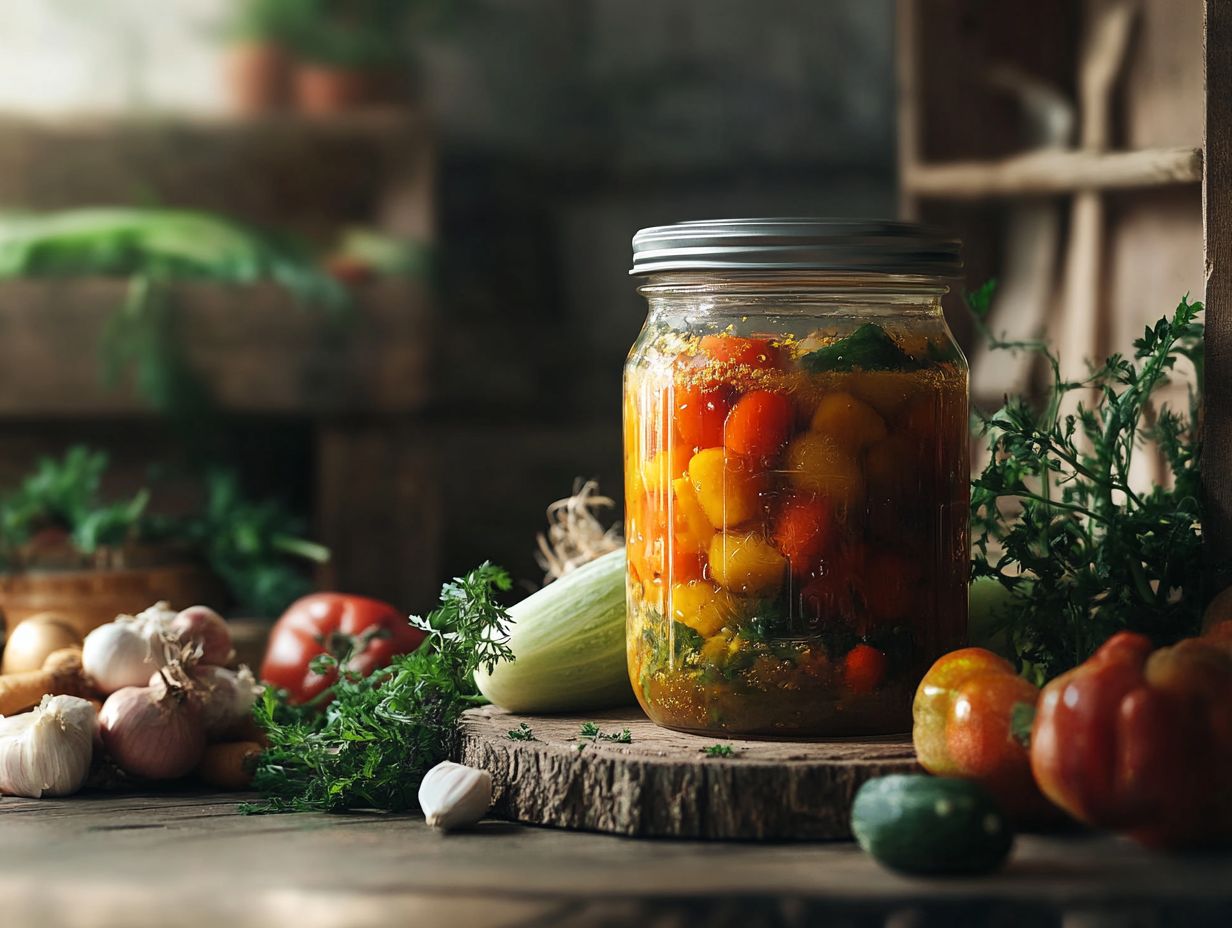
Why Is My Canning Liquid Cloudy?
There are several potential causes for cloudy canning liquid, including improper sterilization, incorrect processing time, and using low-quality ingredients.
Can Using Old or Spoiled Ingredients Result in Cloudy Canning Liquid?
Yes, using old or spoiled ingredients can contribute to cloudy canning liquid because of bacteria or mold growth during the canning process.
What Is the Role of Sterilization in Preventing Cloudy Canning Liquid?
Sterilization is a vital step in canning to kill off any bacteria or microorganisms that can cause cloudiness or spoilage of the canned goods.
Can Cloudy Canning Liquid Still Be Safe to Consume?
In some cases, cloudy canning liquid can still be safe to consume, but it is always best to err on the side of caution and discard any canned goods that appear cloudy or have an off odor or taste.
Why Is It Important to Follow Proper Processing Time When Canning?
The processing time in canning recipes is crucial for ensuring that any harmful bacteria or microorganisms are destroyed, resulting in clear and safe canned goods.
How Can I Prevent or Fix Cloudy Canning Liquid?
To prevent cloudy canning liquid, use fresh, high-quality ingredients and follow proper sterilization and processing techniques. If you encounter cloudy canned goods, you can try reheating and reprocessing them. However, if the cloudiness persists, it is best to discard them.
Stay informed and regularly check your canned goods for safety!

